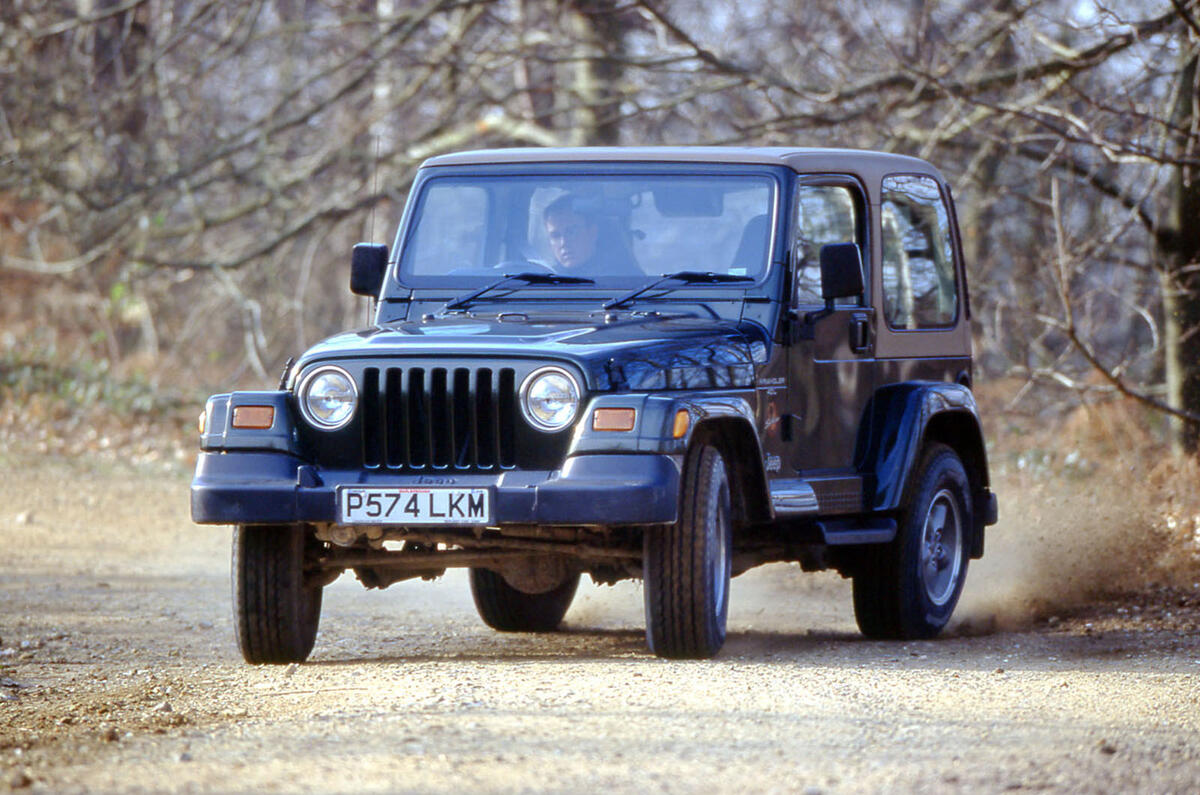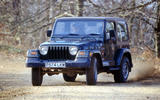There’s an all-new Jeep Wrangler coming to these shores next year.
It looks a lot like the old one but, even more important, like the one before that. It’s a good time, then, to consider this most ancient version, the well-regarded Jeep Wrangler TJ, from 1996 to 2006.
As ever, when you’re talking about motors as old as 22 years, condition is everything, which is why you’ll find there’s little relationship between price and vehicle age.
That said, be wary of ‘Defender inflation’ – the tendency for sellers to ask a bit more, since what else is there? Unless you know your quality Wrangler aftermarket kit from Far Eastern rubbish, favour an original and unmolested example over the many modified ones out there too.
The majority of Wranglers are 174bhp 4.0-litre models, most of them in ‘upmarket’ Sahara trim, with a sprinkling of cheaper Sport versions for good measure. The 4.0-litre is a straight six petrol unit with few issues, so long as it has been looked after. It suits the Wrangler, especially off road.
Because it has to work harder, the 122bhp 2.5-litre four-cylinder petrol engine can be more troublesome. Check for bottom-end noises and a leaky water pump. (The water pump is an issue on both engines.) One thing in the 2.5’s favour is its better fuel economy. If you have no plans to go off road, it could be the one to choose. Worried about high mileage? In the US, Wranglers rack up a quarter of a million without breaking a sweat.
The model has selectable four-wheel drive, with a choice of high and low ratios. The transfer ’box can seize up if four-wheel drive isn’t regularly selected, so ensure it engages smoothly. Check for noisy diffs and worn universal joints causing shunting too. The standard gearbox is a five-speed manual (the 4.0-litre got an uprated unit in 2000) but there’s also a rare four- speed automatic. It needs the correct transmission fluid so feel for lumpy changes and excessive slipping.
The Wrangler is an old-school body-on-frame mud-plugger so the first thing you want to see is a long MOT suggesting the ladder chassis is in robust health, although expect surface corrosion on this and the Dana 44 rear axle. The galvanised body sits on coil springs. They might be a bit saggy but that’s no problem if you plan some off-roading adventures since you’ll want to fit a lifting kit anyway.
Out of the box, the steering was hardly crisp, but if it’s seriously vague, suspect worn ball joints. The Sport had a soft-top and the Sahara a removable hard-top. Check both fit snugly, and look for signs of damp on the seats and floor.All good? Then have a go. It may not be the latest JL but a well-bought TJ will put just as wide a smile on your face, for a fraction of the price.



























Add your comment